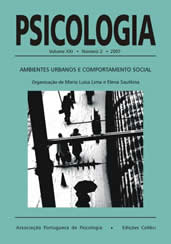Conceptual progress in understanding fear of crime in railways stations
DOI:
https://doi.org/10.17575/rpsicol.v21i2.370Keywords:
-Abstract
Previous research demonstrates there are discrepancies between actual crime and preceived beliefs about crime. The likehood of threatening incidentes and the potential impact of a given incidents are the focus of the presente study of how psychological and environmental cues influence people’s fear of crime in railway stations. Having established the salience of individuals’ construct evaluations of the likelihood and impact of being the victim of crime based upon travellers’ experiences and observations, tha analysis demonstrated that conceptualisations of the impact and likelihood are multifaceted, i.e. different types of threat influence evaluations including psychologial threats as a result of the actions of others, physical threats intiated by others and threats posed by the railway station environment itself. The implications of these findings are discussed for the design and management of railway station environments.


